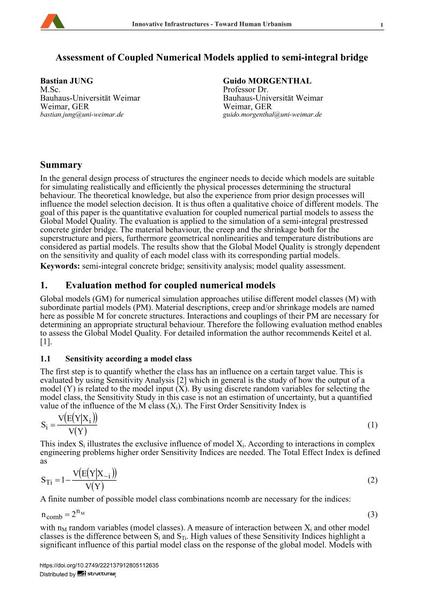Assessment of Coupled Numerical Models applied to semi-integral bridge

|
|
|||||||||||
Bibliografische Angaben
| Autor(en): |
Bastian Jung
Guido Morgenthal |
||||
|---|---|---|---|---|---|
| Medium: | Tagungsbeitrag | ||||
| Sprache(n): | Englisch | ||||
| Tagung: | 18th IABSE Congress: Innovative Infrastructures – Towards Human Urbanism, Seoul, Korea, 19-21 September 2012 | ||||
| Veröffentlicht in: | IABSE Congress Seoul 2012 | ||||
|
|||||
| Seite(n): | 1951-1957 | ||||
| Anzahl der Seiten (im PDF): | 7 | ||||
| DOI: | 10.2749/222137912805112635 | ||||
| Abstrakt: |
In the general design process of structures the engineer needs to decide which models are suitable for simulating realistically and efficiently the physical processes determining the structural behaviour. The theoretical knowledge, but also the experience from prior design processes will influence the model selection decision. It is thus often a qualitative choice of different models. The goal of this paper is the quantitative evaluation for coupled numerical partial models to assess the Global Model Quality. The evaluation is applied to the simulation of a semi-integral prestressed concrete girder bridge. The material behaviour, the creep and the shrinkage both for the superstructure and piers, furthermore geometrical nonlinearities and temperature distributions are considered as partial models. The results show that the Global Model Quality is strongly dependent on the sensitivity and quality of each model class with its corresponding partial models. |
||||
| Stichwörter: |
Sensitivitätsanalyse
|
||||

